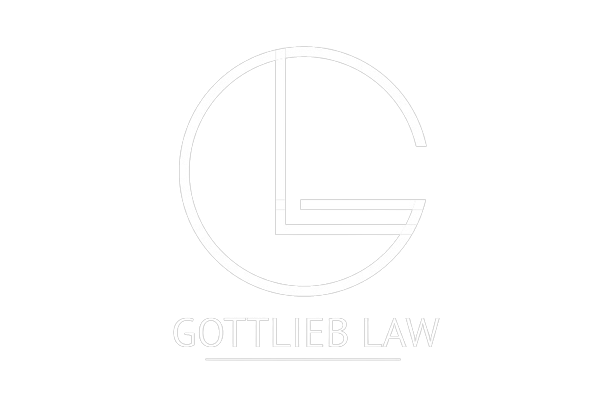Gottlieb Law, PLC provides this article for information purposes only and nothing herein creates an attorney-client relationship. You should not take any actions in reliance on any of the information contained herein without consulting with qualified legal counsel first and reading this article is not a proper substitute for seeking legal advice of your specific situation. Laws change over time and you should seek counsel to discuss any specific legal questions.
Green construction in Arizona represents a paradigm shift towards sustainable development, promising to cut down on energy consumption and operational costs while simultaneously safeguarding our natural resources. With the introduction of sustainable development laws and incentives, Arizona is at the forefront of adopting green building practices, including the utilization of alternative energy and modular construction techniques, into the fabric of its urban development.
This guide takes a deep dive into the evolution of green building standards and the key components of green building laws in Arizona, it provides a comparative analysis with other states, gauging the impact on the construction and real estate industries. What’s more, it explores the future of sustainable building within the state, highlighting the challenges and opportunities that lie ahead. The emphasis on what green construction entails, defining green building, and sets a clear path for stakeholders in the industry to follow for achieving sustainability goals.
Evolution of Green Building Standards in Arizona
The City of Phoenix has been at the forefront of green construction, distributing nearly $800,000 in financial incentives to promote sustainable building practices. The introduction of Phoenix’s first voluntary green building code marks a significant step in the city’s commitment to sustainable development. This initiative not only supports the adoption of green technologies but also encourages developers to integrate sustainable practices throughout the construction process.
The Phoenix Green Construction Code (PGCC) advocates for a ‘whole project’ approach, ensuring that all aspects of construction consider environmental impact. Many of the concepts and guidelines have been adopted from the ICC 700 National Green Building Standard, providing transparency and ease of access to developers and the public alike.
Scottsdale’s Comprehensive Green Legislation
Scottsdale has taken robust measures by implementing stringent green construction laws for new commercial and multifamily developments. These laws mandate adherence to the 2021 editions of the International Energy Conservation Code (IECC) and the International Green Construction Code (IgCC), focusing on substantial reductions in water use and greenhouse gas emissions.
Specifically, the laws target a 20% reduction in water usage and a minimum of 10-13% reduction in greenhouse gas emissions for each new building. The city’s commitment to green building began in the 1990s and was formalized with a voluntary code in 2007, making Scottsdale a leader in sustainable building initiatives. These mandatory codes are expected to significantly influence water usage, reducing outdoor water use by 50% and energy usage by 14%, thereby setting a benchmark for other cities in Arizona and possibly nationwide.
Impact and Adoption of Green Codes
The adoption of the IECC and IgCC in Scottsdale represents a crucial development in Arizona’s green building landscape. Effective from July 1, 2023, these codes apply to all new commercial and multifamily buildings, emphasizing the conservation of natural resources, enhancement of occupant comfort, and reduction of environmental impacts. Scottsdale’s pioneering efforts have not only reduced operational costs but have also improved thermal comfort in buildings, showcasing the tangible benefits of sustainable construction.
The city’s leadership in green building standards has inspired other municipalities across Arizona to consider similar policies, potentially leading to widespread adoption of green building codes. This movement has significantly contributed to the state’s economic vitality and environmental health, with LEED projects alone adding $6.8 billion to Arizona’s GDP between 2015 and 2018.
Key Components of Arizona’s Green Building Laws
Arizona’s eco-conscious building regulations are intricately crafted to diminish environmental footprints and bolster the sustainability of structures. The primary objectives of these codes include mitigating the environmental impacts of construction activities, protecting natural resources, and increasing the energy efficiency and resiliency of buildings.
Notably, the codes enforce the use of low-impact building materials sourced within a 500-mile radius and mandate the inclusion of electric vehicle charging infrastructure for non-residential buildings. Moreover, these regulations prioritize enhancing indoor air purity by advocating for the utilization of low-VOC (Volatile Organic Compounds) materials like paints, coatings, sealants, adhesives, and flooring.
Energy Efficiency and Renewable Energy Integration
Key components of the codes focus on reducing energy consumption through several innovative measures. These encompass the adoption of energy-efficient building enclosures, state-of-the-art mechanical systems, and lighting management.
Moreover, there’s a strong push for the inclusion of renewable energy sources to further mitigate the carbon footprint of new constructions. The International Green Construction Code (IgCC) explicitly integrates provisions for on-site renewable energy generation and robust construction waste management practices, aiming to divert 50% of waste from landfills through recycling and reuse.
Specific Requirements for Maximum Density Option
For projects pursuing the Maximum Density Option under Arizona’s green building laws, there are stringent requirements that must be met. These are categorized into infrastructure, siting, and design criteria. For eligibility, a project must satisfy a minimum of 20 out of 31 defined criteria. These criteria include proximity to public transportation, low water-lift zones, and existing utility infrastructure. Additionally, projects must demonstrate sustainable site planning by ensuring that buildings are positioned to maximize solar access and minimize heat gain, among other environmentally conscious design choices.
Arizona’s Position and Comparison
When compared to the green initiatives of states like California and Washington, Arizona’s approach to green construction underlines a different trajectory. Despite pioneering efforts in cities like Phoenix and Scottsdale, Arizona ranks 36th out of 50 states in terms of environmental friendliness, which encompasses air and water quality, soil health, and contributions to climate change.
This ranking contrasts sharply with the top five greenest states—California, Vermont, New York, Maryland, and Washington. This discrepancy underscores the potential for Arizona to enhance its environmental policies and green building standards to not only catch up with but possibly lead in sustainable development and green construction practices.
Impact on Construction and Real Estate Industries
The integration of eco-friendly building standards in Arizona has yielded substantial economic and environmental advantages. As per the US Department of Energy, the energy codes enforced for residential and commercial structures spanning from 2010 to 2040 are forecasted to deliver $138 billion in energy expenditure reductions and prevent the emission of 900 million metric tons of CO2.
In Scottsdale, for example, the implementation of rigorous green building mandates is anticipated to lead to a 20% decrease in water consumption and, at minimum, a 13% decrease in greenhouse gas emissions for newly erected buildings. Additionally, between 2015 and 2018, LEED projects contributed $6.8 billion to Arizona’s GDP, created 78,000 jobs, generated $4.56 billion in labor income, and produced $204.6 million in tax revenue, underscoring the potent impact of green building on the state’s economy and environmental health.
Legal and Operational Challenges
While the benefits are substantial, green building regulations also present challenges. The initial costs can be higher due to the need for specialized materials and technologies, and the certification process can be time-consuming and demanding. Legal complications may arise if certification standards are not met, potentially resulting in the loss of incentives or delayed payments to contractors.
For instance, if a green building project fails to achieve LEED certification, contractors might not receive their final payments, leading to disputes. It’s imperative for proprietors, developers, and contractors to establish concise outlines of their anticipations and obligations within green building contracts. This aids in minimizing the likelihood of legal disputes and guarantees seamless project implementation.
Future of Sustainable Development in Arizona
The trajectory of sustainable development in Arizona is poised for significant advancement, with initiatives and achievements across various sectors driving the state towards a greener future. One notable example is the Salt River Project (SRP), which has outlined ambitious sustainability goals for 2035 and milestones for 2025. These include substantial reductions in carbon emissions, enhancements in water resiliency, and comprehensive customer and grid enablement. SRP’s commitment is demonstrated through its ongoing projects, such as adding battery storage capacity, hosting Water Conservation Expos, and supporting energy-saving rebate projects. These endeavors not only foster environmental sustainability but also involve the community and empower clients by enhancing energy management and conservation tactics.
Local government initiatives also play a crucial role in shaping the sustainable landscape of Arizona. The Coconino County Sustainable Building Program (CCSBP) offers tools and resources for sustainable construction, including project certification and educational opportunities. The program supports building with alternative methods and materials, further promoting environmental responsibility at the local level. The involvement of the Sustainable Building Citizen Advisory Committee, comprising various stakeholders from building professionals to students, ensures a collaborative approach to sustainable development, making Arizona’s future in green construction not only promising but also inclusive.
Challenges and Opportunities
Green construction in Arizona encounters significant hurdles, including high initial investment costs and a scarcity of skilled labor proficient in sustainable building practices. These challenges are compounded by stringent regulatory frameworks that demand compliance with advanced environmental standards.
The immediate financial burden of adopting green technologies and practices can deter developers, especially when juxtaposed against conventional construction methods that typically incur lower upfront expenses. Moreover, the limited availability of workers trained in green construction techniques further complicates the execution of sustainable projects, necessitating targeted educational programs and incentives to cultivate a more competent workforce.
Regulatory and Climate Adaptation Challenges
Arizona’s unique environmental conditions and ongoing housing crises present complex challenges that require harmonized efforts between state officials and construction sectors. The integration of green infrastructure (GI) is seen as a viable solution to climate adaptation; however, its implementation is often hindered by inadequate design standards, unclear regulatory pathways, and financial feasibility concerns.
For instance, the Navajo Nation has experienced minimal housing development due to longstanding federal building moratoriums and familial economic constraints, illustrating the socio-economic barriers that intertwine with regulatory issues. Furthermore, the effectiveness of green infrastructure in Arizona is often questioned due to its perceived novelty and concerns regarding long-term reliability in diverse soil and climate conditions.
Opportunities for Innovation and Policy Enhancement
Despite these challenges, Arizona holds substantial opportunities for advancing green construction practices. The state’s approach to sustainable building codes, as investigated by The Arizona Republic, reveals varying degrees of commitment across municipalities, with some cities making significant strides in incorporating sustainability into their building regulations. This variability indicates a vast potential for policy enhancement and standardization that could drive statewide improvements in sustainability practices.
Additionally, the perception of green infrastructure as untested could be transformed into an opportunity for innovation, where developers and municipalities collaborate to pilot and refine sustainable technologies, setting benchmarks for others to follow. This proactive approach could not only address the immediate challenges but also position Arizona as a leader in green construction and sustainable development.
Gottlieb Law Can Help!
The attorneys at Gottlieb Law, PLC have established a proven track record of representing our clients in complicated real estate legal matters in Arizona. Our firm can review any potential green construction issue to ensure your rights are being fairly represented and that your project proceeds without unnecessary and costly delays. Speak to our firm today by calling 602-899-8188 or schedule an initial consultation by submitting your information on our Contact Us Page.
Gottlieb Law, PLC provides this article for information purposes only and nothing herein creates an attorney-client relationship. You should not take any actions in reliance on any of the information contained herein without consulting with qualified legal counsel first and reading this article is not a proper substitute for seeking legal advice of your specific situation. Laws change over time and you should seek counsel to discuss any specific legal questions.

